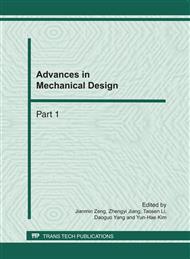p.68
p.72
p.78
p.83
p.87
p.92
p.97
p.102
p.106
Dynamic Analysis of 64-Type Rush-Repair Steel Girder under the Moving Train Loads
Abstract:
In China, the 64-type rush-repair steel girder developed in 1964 has played a huge role in the railway and highway transportation engineering construction. When it is used as a temporary railway bridge, the original biggest design traffic speed only is 30 km/h. With the rapid development of domestic railway, the dynamic performance of the 64-type rush-repair steel girder must be studied in detail in order to make clear what it can adapt the current technical requirements. In the paper, the structure and technical characteristics of the 64-type rush-repair steel girder are introduced and the dynamic responses of the 64-type rush-repair steel girder are calculated using the train-bridge coupling vibration theory. The main objects of study in paper are the 24m-span and 32m-span girders. The vibration-related laws of the 64-type rush-repair steel girder versus the different train speeds are revealed, and the proposals about the largest reasonable traffic safety speed are given.
Info:
Periodical:
Pages:
87-91
Citation:
Online since:
February 2011
Authors:
Price:
Сopyright:
© 2011 Trans Tech Publications Ltd. All Rights Reserved
Share:
Citation:


